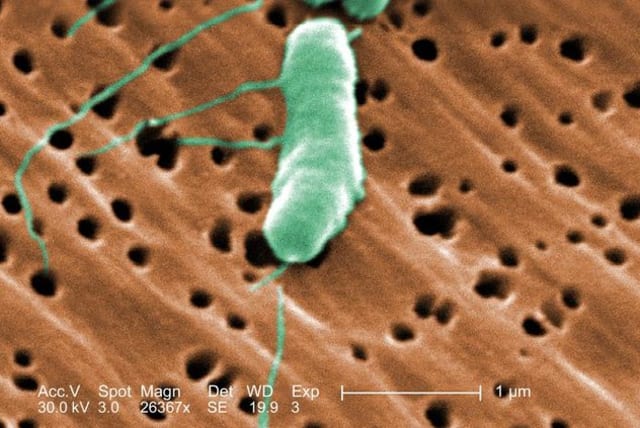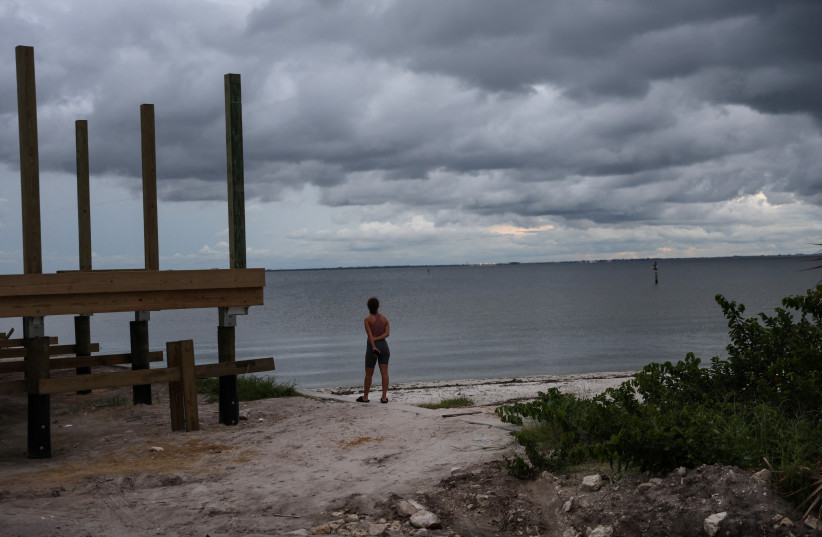Climate change fuels lifespan of flesh-eating bacteria - study

Recent research has uncovered that infections caused by the bacteria Vibrio vulnificus has increased in the last three decades.
A deadly, flesh-eating bacteria is becoming increasingly prominent as ocean temperatures continue to rise as a result of climate change. If global warming is not intervened quickly, this bacteria will only continue to strengthen and pose more of a threat than ever before.
According to a peer-reviewed study published in the academic journal Scientific Reports, the prevalence of this fatal bacteria will only grow stronger as climate change rapidly continues.
Vibrio vulnificus is a microorganism that requires warm, shallow, and even slightly salty waters to thrive. This makes the East Coast of the United States the perfect place for the bacteria to grow until it can attach to a host. When people go swimming, or even just on a walk through the water, this bacteria can manage to find its way into cuts, wounds, and even insect bites.
This bacteria can also be accidentally ingested, along with other Vibrio species, when eating raw or undercooked seafood such as oysters.
V. vulnificus thrives during the peak heat of summer. Sewage overflow into coastal waters can also impact the rise of the bacteria's presence, which US conservation authorities believe occurred after Hurricane Ian struck Florida last year, the Smithsonian Institute reported. This is what was believed to have caused an uptick in infections from this bacteria.
The stronger the immune system, the more likely you are to fight off these potentially fatal bacterial infections, researchers say. However, some are particularly vulnerable to this bacteria in comparison. The elderly, in particular, can fall victim.
What can Vibrio vulnificus do to the human body?
This bacteria can cause symptoms such as fever, chills, watery diarrhea, vomiting, nausea, low blood pressure, and blistering skin lesions, along with fatal repercussions. The bacteria's ability to enter an open wound can kill off otherwise healthy tissue.
Researchers analyzed data provided by United States Center for Disease Control, examining reports of V. vulnificus infections along the Eastern Seaboard between 1988 and 2018.
V. vulnificus cases have previously shown typical cases occurring along the Gulf of Mexico and the southern coast of the Atlantic Ocean, however, they were not common in bodies of water north of Georgia. Over the last three decades, these infections have been expanding farther and farther north. Cases have gone as far as Philadelphia while still thriving and present in southern states like Texas. The number of cases has also increased from ten per year in the late 1980s to around 80 per year by 2018, researchers said.
This has caused increasing concern for human health amidst an ongoing climate change crisis.
Researchers tested the strength of the bacteria under several different climate scenarios, revealing that high levels of future greenhouse gas emissions will allow this bacteria to become present in every state along the East Coast, sometime between 2081 and 2100. These researchers predict that if emissions are lower than expected, the bacteria might be less widespread and only reach Boston as its northernmost point.
Infection numbers may remain low right now, however, scientists see an immediate concern in the bacteria's mortality rate. Around 20% of people infected will suffer fatal results, while others may have to resort to amputation to survive.
As the United States elderly population continues to grow, this makes it more likely for the risk of infection. Further, V. vulnificus infections are known for being notoriously expensive to treat, coming with an estimated price tag of $320 million per year nationwide.
Now, experts advise that people who opt for aquatic recreational activities should avoid these waters when they have an open wound.
Jerusalem Post Store
`; document.getElementById("linkPremium").innerHTML = cont; var divWithLink = document.getElementById("premium-link"); if (divWithLink !== null && divWithLink !== 'undefined') { divWithLink.style.border = "solid 1px #cb0f3e"; divWithLink.style.textAlign = "center"; divWithLink.style.marginBottom = "15px"; divWithLink.style.marginTop = "15px"; divWithLink.style.width = "100%"; divWithLink.style.backgroundColor = "#122952"; divWithLink.style.color = "#ffffff"; divWithLink.style.lineHeight = "1.5"; } } (function (v, i) { });

